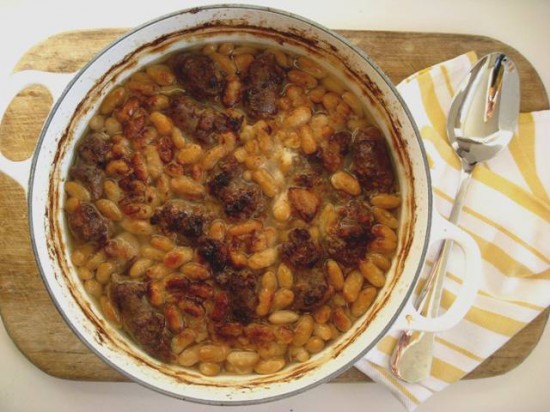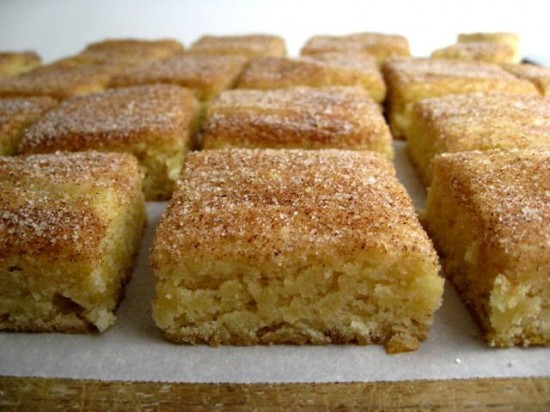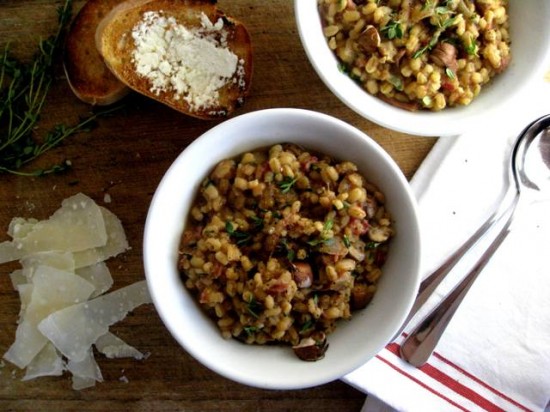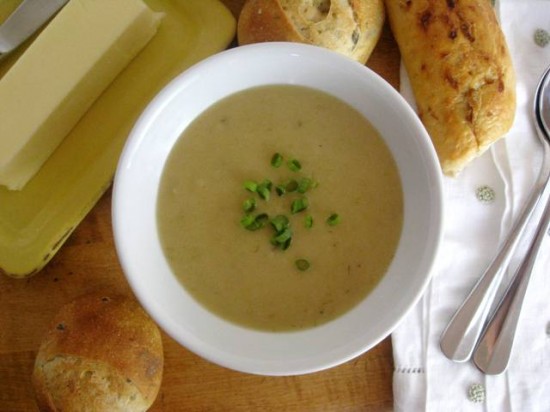
Stop right there! Just before you get carried away with thought of a cassoulet for tonights dinner, I should let you know it is going to take a couple of days (and another two if you make your own duck confit) to make properly. But I assure you, it is totally worth the wait (and the work) because once you get a mouthful of this sinfully rich, meltingly tender dish you will know that all your efforts have been rewarded.
Consider a mix of succulent meats and creamy white beans that have been slow cooked into a heart-warming and rustic dish, the type of dish you can eat in a bowl in front of the fire with a nice Côtes du Rhône or something with similar depth and body – which is exactly what I did after spending the better part of a week wrestling with duck, pork sausages and loads of beans.
Ingredients
400 grams/14 ounces dried white beans, such as Cannellini, soaked overnight in cold water & drained
2 – 4 duck confit legs (or around 1 kilo/2lbs – depending on size) , including duck fat (recipe below)
3 large onions, quartered
2 large carrots, coarsely chopped
5 garlic cloves, roughly chopped
250 grams/8.8 ounces pork rind, cut into 2″ pieces
2 fresh bay leaves
500 grams/1.1 pound fresh pork sausage, cut into 2″ pieces
250 grams/8.8 ounces pork shoulder, cut into 1.5″ pieces
Combine beans and 3 litres cold water in a large saucepan over high heat, cover, bring to the boil (5 minutes), drain, then reserve beans in a bowl.
Remove duck from fat (reserve 2 tbsp fat and keep remainder for another use), then pull the meat from the bones. Reserve bones and meat separately.
Return saucepan to high heat, add onion, carrot, pork rind, bay leaves, garlic, reserved duck bones and 3 litres water, season to taste, cover, bring to the boil, then reduce heat to low, cover and simmer for 1 hour. Remove pork rind and set aside, then strain stock into a saucepan (discard solids).
Add beans to stock, cover, bring to the boil, then reduce heat to low and simmer until beans are soft but skins remain uncracked (1 hour; older beans may take longer). Strain stock into a jug, season beans to taste, and reserve beans and stock separately.
Meanwhile, heat reserved fat in a large frying pan over low-medium heat, add duck and saute for 3 – 4 mins, remove and set aside. Increase heat to medium-high, add sausage and pork shoulder and cook until browned (2-3 minutes), remove sausage and pork and set aside separately. Remove pan from heat and reserve fat and pan juices.
Preheat oven to 150C. Arrange reserved pork rind in the base of a 4-litre cassole or casserole. Spoon over one-third of beans, pat down gently, scatter over duck and pork, then spoon over remaining beans, patting down gently. Arrange sausage evenly over beans, pushing down gently so it is embedded but still visible. Slowly add stock to just cover (you’ll need 3 litres stock; top up with water if necessary), drizzle with fat and pan juices.
Bake cassoulet, uncovered, until golden and beans are very tender (3 hours). After the first hour, if a golden-brown crust has formed on the surface, break it into the beans. Repeat this process every hour. If the beans on the surface begin to dry out, drizzle with a few tablespoons of the reserved bean stock or water. Remove cassoulet from oven, cover loosely with foil, cool to room temperature, then refrigerate overnight.
Two hours before serving, remove cassoulet from refrigerator and bring to room temperature. Transfer to a cold oven, heat oven to 150 c/300 f, cook until warmed through and golden (1½ hours), stand for 15 minutes, then serve hot.
Notes: This recipe is based on a very traditional Cassoulet – you can also add a topping of breadcrumbs to the dish which creates a lovely crust on top of the beans and sausage. If you want to go down this path then take a cup of fresh bread crumbs, mix through a little extra duck fat and scatter them over the dish in the last hour of cooking – sublime!
Source: adapted from Australian Gourmet Traveller
Duck Confit
“Duck Confit was originally used as a preservation method – cooking and keeping the duck in its rendered fat results in meltingly tender, moist, and extremely flavorful meat which can be used in a variety of simple preparations. Sear the duck legs in a hot skillet or shred the meat and add it to salads, or, perhaps best of all, make duck rillettes. Just remember the duck must be salted at least a day before you plan to cook it.” Tom Colichhio, Gramercy Tavern, New York
*you will need to start this recipe a day ahead*
Ingredients
100 grams sea salt
2 golden shallots (scallions), finely chopped
4 garlic cloves, finely chopped
3 teaspoons thyme leaves
4 -8 duck legs (about 2kg/4 lb – depending on size of each leg)
1.5 kg canned duck or goose fat
Combine salt, shallot, garlic and thyme in a bowl.
Place duck legs in a single layer in a dish or plastic container, scatter seasoning mixture over and rub well all over duck. Cover with plastic wrap and refrigerate for at least 12 hours, preferably 1 – 2 days.
Brush the seasoning mixture from duck, pat dry with absorbent paper and place in a single & snug layer in a high sided baking dish.
Preheat oven to 110c/225f. Warm duck fat in a saucepan over low heat until just melted, then pour over duck legs until they are completely covered. Bake until very tender and the meat draws back from the bone (2 – 4 hours depending on the size of your duck legs). The duck fat should be at a very slow simmer and show the occasional bubble.
Scatter a little salt in the base of a casserole dish. Remove the duck from the fat and place in a single layer in the dish, strain over the duck fat to cover completely by at least 1 inch. Cover and refrigerate until required – it will keep in the refrigerator for several weeks.
Notes: The curing process draws moisture from the meat and enhances its flavour.



























